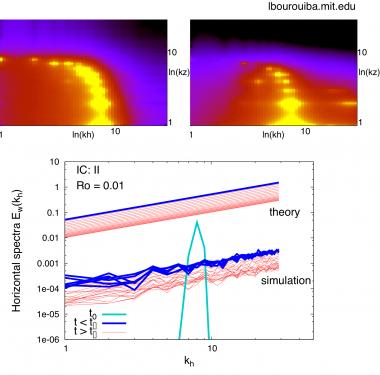The purpose of this study is to examine the strongly rotating limit of a turbulent flow theoretically and numerically. The goal is to verify the predictions of asymptotic theories. Given the limitations of experimental and dissipative numerical approaches to this problem, we use classical equilibrium statistical mechanics. We apply the statistical mechanics approach to the inviscid truncated model of strongly rotating turbulence in the small Rossby number range and derive the theoretical spectra of the decoupled model. We use numerical simulations to complement these derivations and examine the relaxation to equilibrium of the inviscid unforced truncated rotating turbulent system for different sets of initial conditions. We separate our discussion into two time domains: the discussion of the decoupled phase with time below a threshold time t* for which a new set of invariants S are identified, and the coupled phase with a time beyond t*, for which the quantities S are no longer invariants. We obtain a numerical evaluation of t* which is coherent with the theoretical asymptotic expansions. We examine if the quantities S play a constraining role on the coupled dynamics beyond t>t*. We find that the theoretical statistical predictions in the decoupled phase capture the horizontal dynamics of the flow. In the coupled phase, the invariants S are found to still play a constraining role on the short-timescale horizontal dynamics of the flow. These results are discussed in the larger context of previous rotating turbulence studies.

